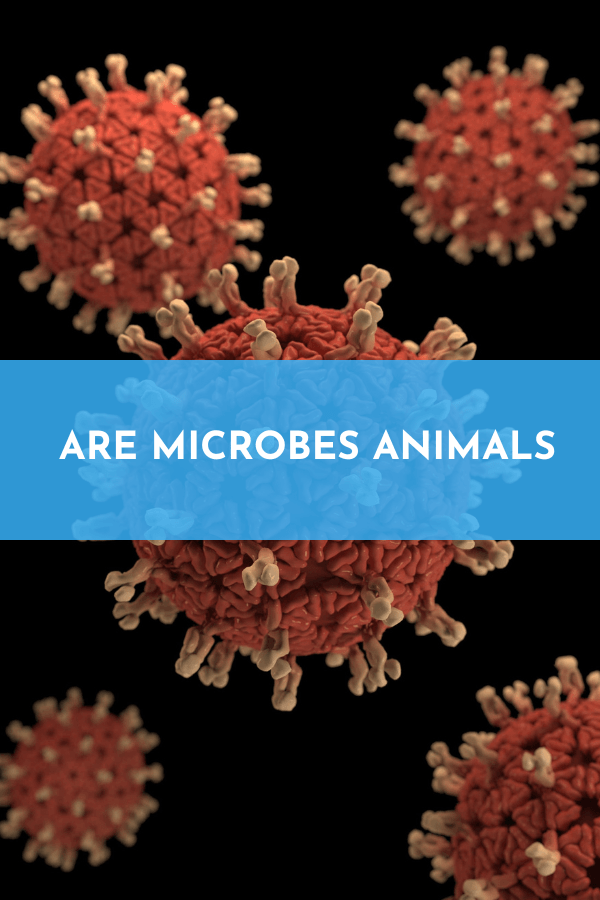The realm of microorganisms, often referred to simply as “microbes,” has long intrigued scientists and curious minds alike.
But amidst the fascination lies a fundamental question: Are microbes animals? In this introductory section, we’ll embark on a journey to explore the intricate world of microbes, diving deep into their characteristics, functions, and their place in the broader context of life on Earth.
Microbes, short for microorganisms, are life forms that exist on a microscopic scale.
Despite their diminutive size, they play an outsized role in various ecosystems, industries, and even within the human body.
These tiny entities encompass a vast array of life forms, ranging from bacteria and viruses to fungi and protists.
To understand whether microbes qualify as animals, we must first unravel their defining traits and distinguish them from the animal kingdom.
What are microbes?

Before we can determine if microbes are animals, we need a solid grasp of what they are and what sets them apart from larger life forms.
Microbes are remarkable in their diversity and adaptability. They thrive in environments as extreme as the deep sea and as familiar as our own bodies. To appreciate their uniqueness, let’s delve into the following aspects:
Microbes are minuscule, often measuring mere micrometers in size. This microscopic scale renders them invisible to the naked eye.
While animals are generally much larger and can range from tiny insects to massive whales, microbes challenge our perception of life due to their small stature.
A defining characteristic of many microbes is their unicellular nature. Unlike animals, which consist of complex multicellular organisms, microbes often consist of a single cell that carries out all necessary life functions.
This simplicity is a stark contrast to the intricate organ systems and tissues seen in animals.
Microbial cells typically have simpler structures compared to the specialized cells found in animals.
While animals exhibit cellular differentiation into tissues and organs with specific functions, microbial cells often serve as self-sufficient units, each capable of performing essential tasks for the organism’s survival.
Microbes vs. Animals
Now that we have a foundational understanding of microbes, it’s time to draw a clear distinction between these microscopic entities and animals, which belong to the Animalia kingdom. While both are forms of life, their differences are striking:
Microbes, including bacteria, viruses, fungi, and protists, share several key characteristics:
- Unicellularity: Many microbes consist of single cells that are often self-sufficient.
- Simplicity: Microbial cells tend to have less complex structures compared to the specialized cells found in animals.
- Microscopic Size: Microbes are extraordinarily small, making them invisible to the naked eye.
- Diverse Kingdoms: Microbes are distributed across multiple kingdoms, including Bacteria, Archaea, and Protista.
Characteristics of Animals
In contrast, animals are members of the Animalia kingdom and exhibit distinct traits:
- Multicellularity: Animals are multicellular organisms, composed of multiple specialized cells that collaborate to perform various functions.
- Complex Anatomy: Animals typically possess complex anatomical structures, including organs and organ systems that facilitate processes like digestion, respiration, and locomotion.
- Tissue Differentiation: Animals exhibit tissue differentiation, meaning their cells are organized into tissues with specific functions, allowing for specialization and division of labor within the organism.
By examining these distinguishing characteristics, it becomes evident that microbes and animals occupy different realms in the spectrum of life.
While microbes are tiny unicellular wonders with simpler structures, animals are multicellular organisms with intricate organ systems.
Conclusion
In conclusion, microbes are not animals; they constitute a distinct category of life forms with their own unique characteristics, roles, and contributions to the natural world.
While they may be tiny in size, their impact on ecosystems, industry, and health is immeasurable.
This exploration has merely scratched the surface of the microbial world, leaving ample room for further study and discovery.
Whether they are aiding in nutrient cycling, enabling industrial processes, or serving as the foundation of groundbreaking research, microbes continue to captivate scientists and enthusiasts alike.
